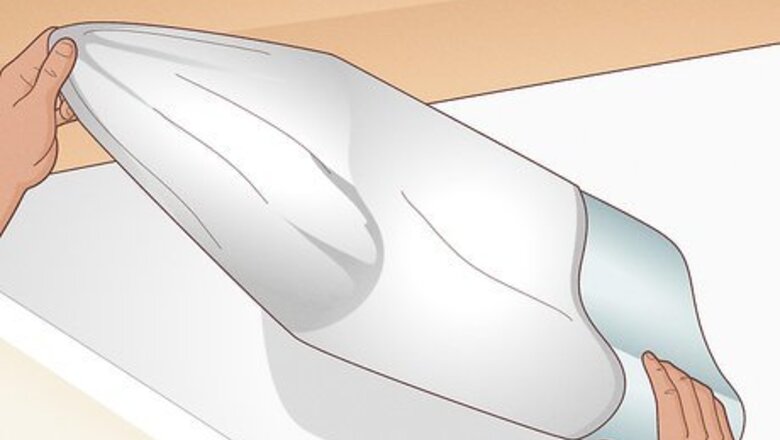
views
Cleaning Spills
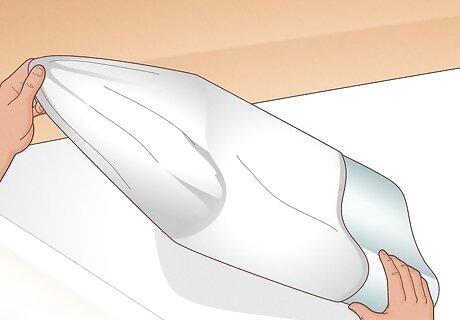
Remove the pillowcase and wash it as directed. As soon as you’ve spilled something, remove the pillowcase and check its care instructions label. Soak it in cool water or wash it according to its care instructions immediately to prevent staining. Using a liquid-proof pillowcase or pillow protector will help keep your memory foam pillow clean. Since washing it is not as simple as throwing it in a machine, stain prevention will save you the hassle of more frequent cleanings.
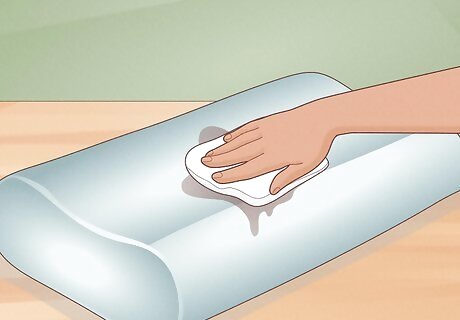
Soak up liquid with towels as soon as possible. With the pillowcase removed, blot the spill area with dry cloths microfiber towels, or paper towels. Try to soak up as much of the spilled liquid as possible. Use blotting motions instead of hard scrubbing or rubbing. Less gentle motions can damage the pillow’s foam structure.
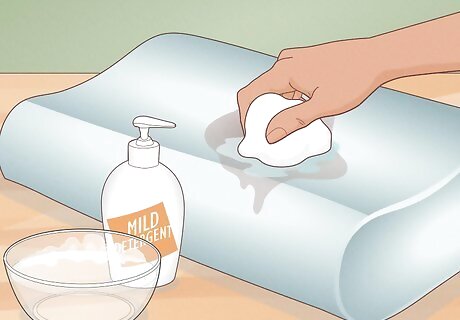
Dab the spill area with a moist cloth and mild detergent. Once you have soaked up excess liquid, dab the area with a cloth or paper towel moistened with cool water. If you have trouble getting out the spill out, squirt a drop or two of mild, alcohol-free dish soap onto the damp cloth and use it to blot the spill area. Hot water causes stains to set, so cool water is your best option. Have patience and keep gently blotting instead of scrubbing hard. Use as little moisture as possible to clean the spill, as water can damage memory foam.
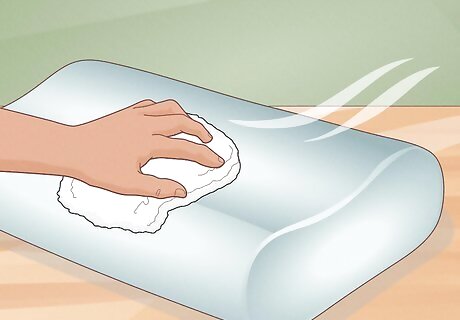
Blot and air dry the pillow completely. After cleaning up the spill, blot the area with a dry towel. Avoid wringing out the pillow, or you’ll risk damaging the foam structure. Once you’ve removed as much dampness as possible using the towel, let the pillow air dry completely before replacing the pillowcase. You can use a blow dryer to quicken the drying process, but be sure it is on a cool setting. Avoid using a dryer or you’ll risk melting a memory foam pillow.
Removing Odors
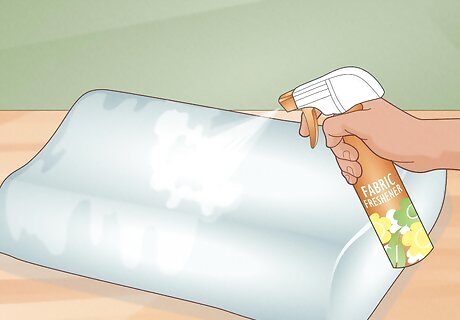
Mist the pillow with a fabric freshener. A fabric freshening spray, such as Febreeze, is a good quick fix if you need to neutralize an odor. While it might not deal with tougher odors, it'll work as an easy first line of defense. You should spray the pillow lightly with fabric spray and avoid saturating it.
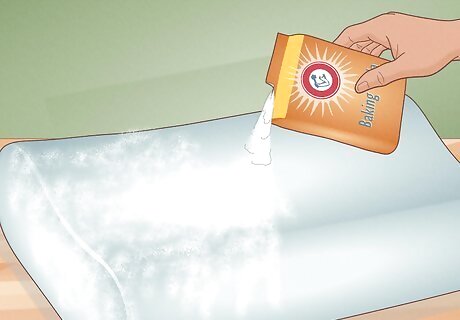
Sprinkle baking soda onto the pillow. With the pillowcase removed, sprinkle baking soda liberally over both sides of the pillow. Let it sit for up to 15 minutes for basic odor removal. For tougher jobs, let it sit for at least 30 minutes. You can also sprinkle the pillow with borax if you prefer it or don’t have baking soda on hand.
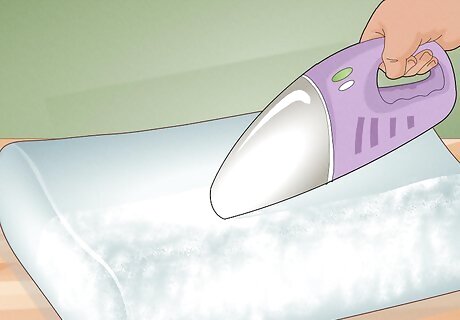
Vacuum up the baking soda after letting it sit. Use a handheld vacuum cleaner or a hose attachment on a floor vacuum to remove the baking soda. Vacuuming will also remove dust, skin cells, and other particles from within the pillow. It’s wise to invest in an inexpensive handheld vacuum that you use only for your bedding. That way, you won’t use the same appliance for both your floors and places you rest your face.
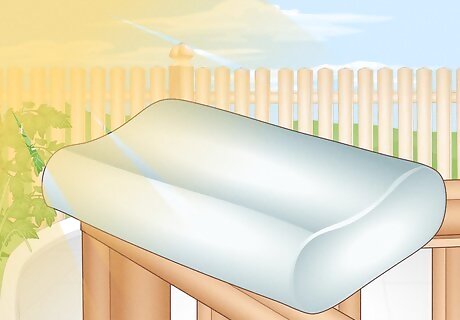
Try leaving the pillow out in bright sunlight. Using sunlight to disinfect and deodorize is an old fashioned technique that many manufacturers now recommend. Hang your pillow outside on a clothesline on a warm, sunny day for natural odor removal. To keep it from picking up allergens, choose a day with a low pollen count to air out your pillow. Give it a quick vacuuming after hanging it outside.
Removing Stains
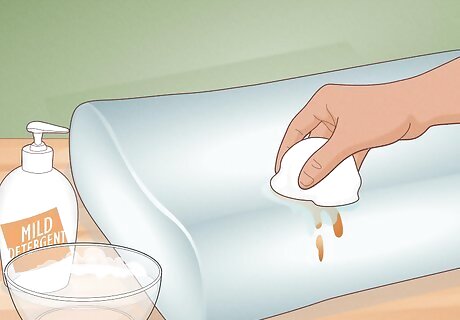
Try dabbing it with water and a mild detergent first. If a stain has set, your first course of action should be to try cool water and mild soap. Use blotting and dabbing motions and avoid hard scrubbing. Remember to use as little water as possible when cleaning spills and stains.
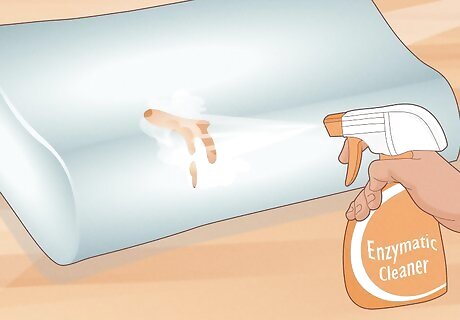
Spray the stain with an enzymatic cleaner. If your first attempt is unsuccessful, try a slightly stronger cleaner. Find an enzyme cleaner in a spray bottle at a nearby home, grocery, or department store. Spray the stained area or, to remove heavy duty odors, the entire pillow. Let the cleaner stand for five minutes after spraying. Spray the pillow lightly and avoid saturating it.
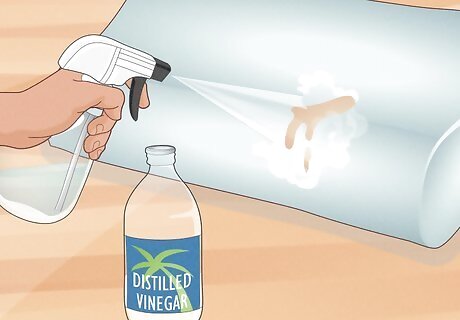
Use a vinegar solution if you don’t have an enzymatic cleaner. You can make a quick vinegar solution if you need to remove a stain right away but don’t have an enzyme cleaner on hand. Mix together one part cool water and one part white distilled vinegar, then transfer the solution to a spray bottle. Add a teaspoon of lemon juice to the solution to help cut the vinegar smell. Spray the pillow lightly with the vinegar solution then let it stand for five minutes.
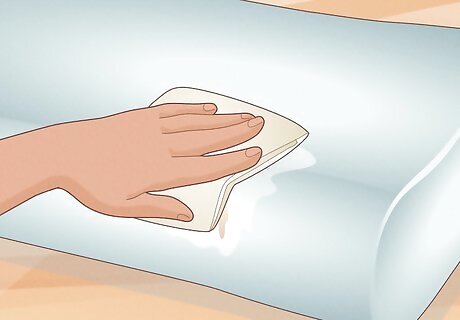
Blot the area with a damp cloth. After letting the cleaner stand for 5 minutes, dampen a clean cloth or paper towel with cool water. Use it to blot the affected area and gradually work out the stain. Repeat the spray, let stand, and blot process until you have removed the stain.
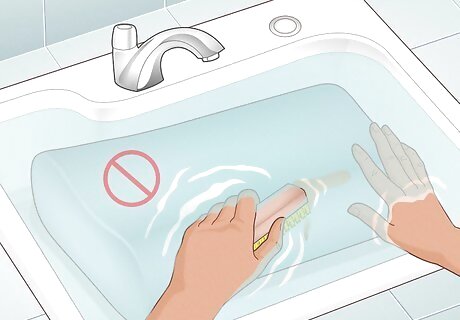
Avoid ruining your pillow to get out a stubborn stain. If you cannot remove a stain, remember that the pillow will be covered by its case and the stain won’t be visible. Don’t scrub or soak the pillow or use a harsh cleaner. If there’s no bad odor, it’s better to have an invisible stain than a ruined pillow.
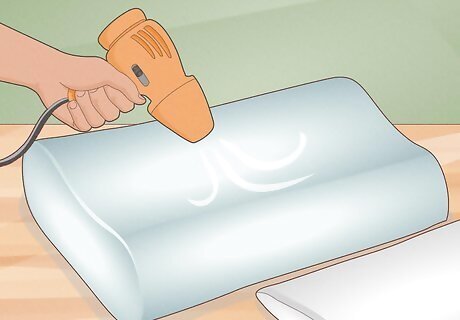
Dry the pillow completely before replacing the pillowcase. Give the pillow 12 to 24 hours to air dry completely or use a blow dryer on a cool setting. Replacing the pillowcase while the pillow is still wet could encourage mold growth. Using the pillow while it’s still wet could damage the foam.




















Comments
0 comment